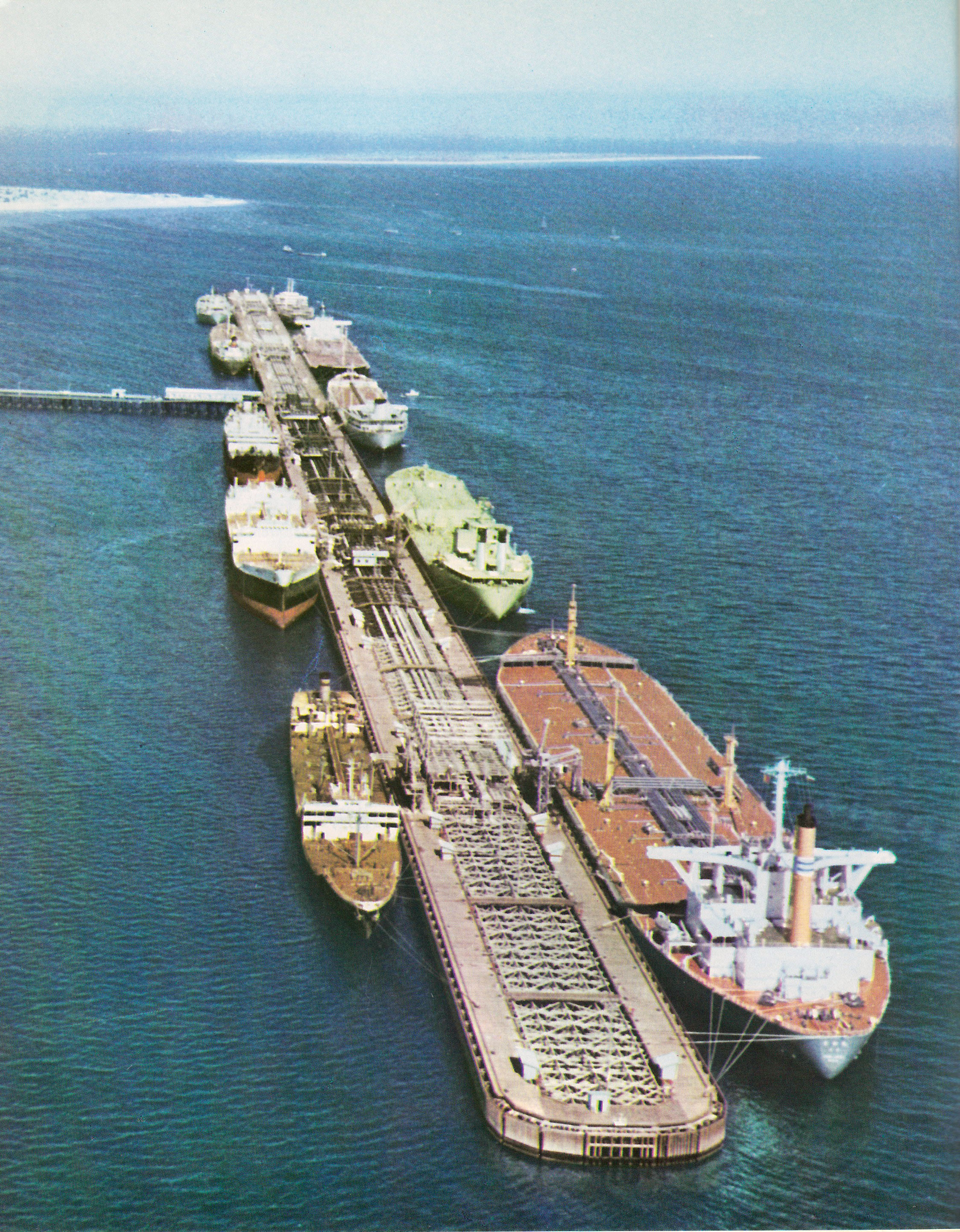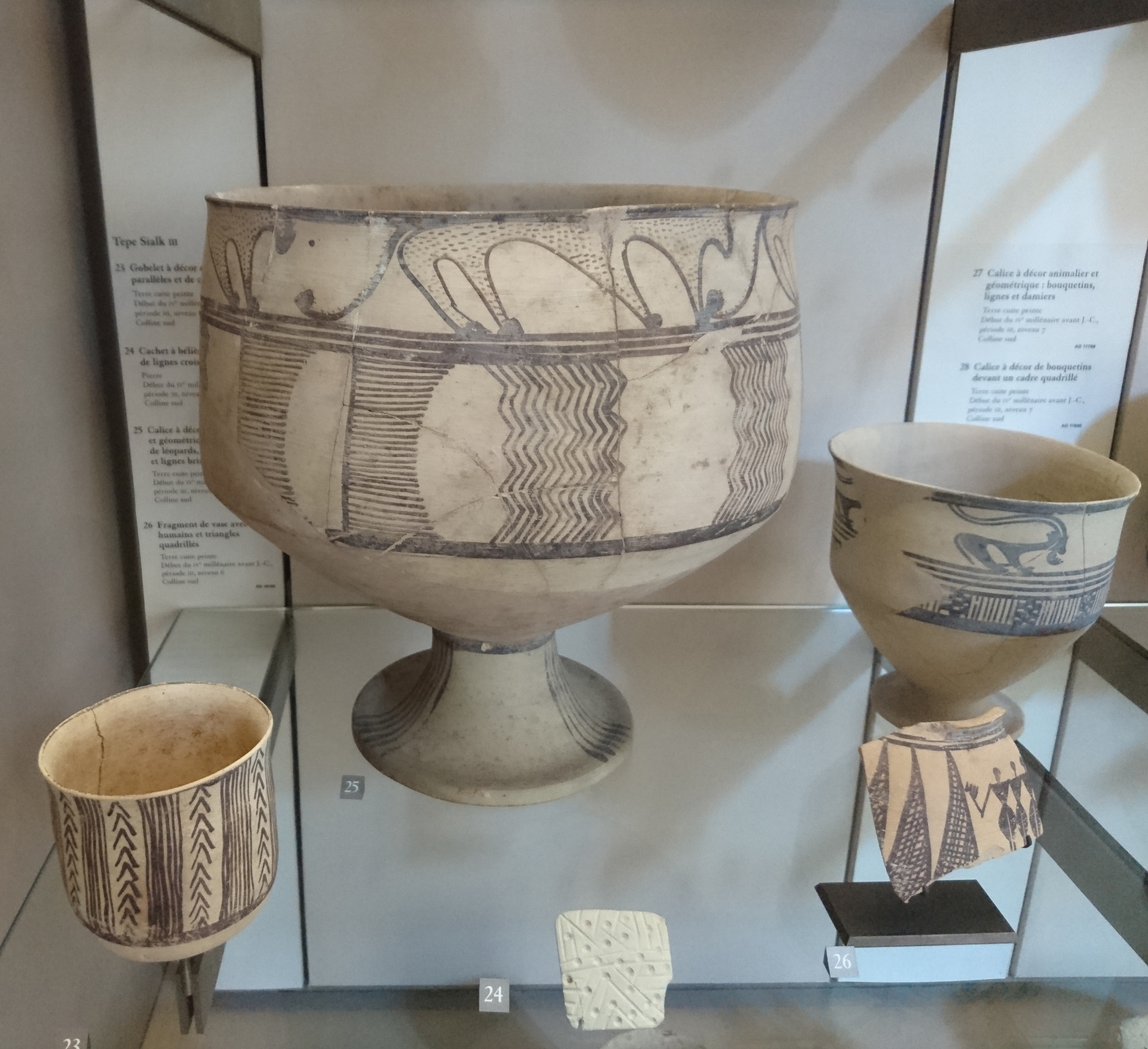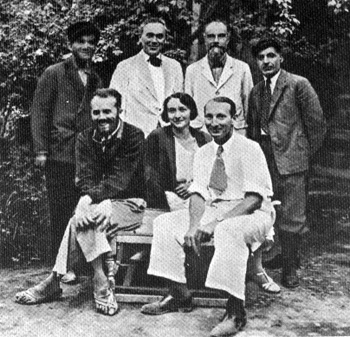|
Ghirshman, Roman
Roman Ghirshman (, ''Roman Mikhailovich Girshman''; October 3, 1895 – 5 September 1979) was a Russian-born French archeologist who specialized in ancient Persia. Ghirshman spent nearly thirty years excavating ancient Persian archeological sites throughout Iran and Afghanistan. Biography Roman Ghirshman was born to a wealthy Jewish family in Kharkiv in the Sloboda Ukraine (present-day Ukraine) in 1895. Ghirshman moved to Paris in 1917 to study Archeology and Ancient Languages. He was mainly interested in the archeological ruins of Iran, specifically Teppe Gian, Teppe Sialk, Bagram in Afghanistan, Bishapur in Fars, and Susa. Explore the hills Giyan book, written Roman Ghirshman, in Iran, Tehran, by Mortza Kayani and SohrabiPileroodi translated into Farsi and in publications Safyrardhal, 2021AD has been published. In the 1930s, Girshman, together with his wife Tania Ghirshman, was the first to excavate Teppe Sialk. His studies on Chogha Zanbil have been printed in 4 vol ... [...More Info...] [...Related Items...] OR: [Wikipedia] [Google] [Baidu] |
Vladimir Osipovich Girshman
Vladimir may refer to: Names * Vladimir (name) for the Bulgarian, Croatian, Czech, Macedonian, Romanian, Russian, Serbian, Slovak and Slovenian spellings of a Slavic name * Uladzimir for the Belarusian version of the name * Volodymyr for the Ukrainian version of the name * Włodzimierz (given name) for the Polish version of the name * Waldemar, Valdemar for the Germanic version of the name * Wladimir for an alternative spelling of the name Places * Vladimir, Russia, a city in Russia * Vladimir Oblast, a federal subject of Russia * Vladimir-Suzdal, a medieval principality * Vladimir, Ulcinj, a village in Ulcinj Municipality, Montenegro * Vladimir, Gorj, a commune in Gorj County, Romania * Vladimir, a village in Goiești Commune, Dolj County, Romania * Vladimir (river), a tributary of the Gilort in Gorj County, Romania * Volodymyr (city), a city in Ukraine Religious leaders * Metropolitan Vladimir (other), multiple * Jovan Vladimir (d. 1016), ruler of Doclea and a saint of ... [...More Info...] [...Related Items...] OR: [Wikipedia] [Google] [Baidu] |
Sialk
Tepe Sialk ( fa, تپه سیلک) is a large ancient archeological site (a ''tepe'', "hill, tell") in a suburb of the city of Kashan, Isfahan Province, in central Iran, close to Fin Garden. The culture that inhabited this area has been linked to the Zayandeh River Culture. History A joint study between Iran's Cultural Heritage Organization, the Louvre, and the Institut Francais de Recherche en Iran also verifies the oldest settlements in Sialk to date to around 6000–5500 BC. The Sialk ziggurat was built around 3000 BC. Sialk, and the entire area around it, is thought to have originated as a result of the pristine large water sources nearby that still run today. The Cheshmeh ye Soleiman ("Solomon's Spring") has been bringing water to this area from nearby mountains for thousands of years. The Fin garden, built in its present form in the 17th century, is a popular tourist attraction. It is here that the kings of the Safavid dynasty would spend their vacations away from their c ... [...More Info...] [...Related Items...] OR: [Wikipedia] [Google] [Baidu] |
Khuzestan
Khuzestan Province (also spelled Xuzestan; fa, استان خوزستان ''Ostān-e Xūzestān'') is one of the 31 provinces of Iran. It is in the southwest of the country, bordering Iraq and the Persian Gulf. Its capital is Ahvaz and it covers an area of . Since 2014, it has been part of Iran's Region 4. Historically, one of the most important regions of the Ancient Near East, Khuzestan is what historians refer to as ancient Elam, whose capital was in Susa. The Achaemenid Old Persian term for Elam was ''Hujiyā'' when they conquered it from the Elamites, which is present in the modern name. Khuzestan, meaning "the Land of the Khuz", refers to the original inhabitants of this province, the "Susian" people (Old Persian "Huza" or ''Huja'', as in the inscription at the tomb of Darius the Great at Naqsh-e Rostam). They are the Shushan of the Hebrew sources where they are recorded as "Hauja" or "Huja". In Middle Persian, the term evolves into "Khuz" and "Kuzi". The pre-Islamic Par ... [...More Info...] [...Related Items...] OR: [Wikipedia] [Google] [Baidu] |
Izeh
Izeh ( fa, ايذه, also Romanized as Īz̄eh; also known as Malāmir, Izaj, and Malemir) is a city and capital of Izeh County, Khuzestan Province, Iran. At the 2006 census, its population was 103,695, in 20,127 families. Izeh also has mines of rocks and minerals. It is famous for its dam and ancient monuments that are located in Kul-e Farah, Eshkaft-e Salman, Khongazhdar, Tagh e Tavileh, Shir-e Sangi (Stone Lion cemetery), Shahsavar relief, Khong e Kamalvand, Khong e Ajdar, Khong e Yaralivand, ghalesard village (Qalesard), and Sheyvand relief. The population of Izeh mainly consists of Bakhtiaris. Climate Izeh has a Hot-summer Mediterranean climate (Köppen Köppen is a German surname. Notable people with the surname include: * Bernd Köppen (born 1951), German pianist and composer * Carl Köppen (1833-1907), German military advisor in Meiji era Japan * Edlef Köppen (1893–1939), German author and ... ''Csa'') with scorching, rainless summers and comfortable, somewhat ... [...More Info...] [...Related Items...] OR: [Wikipedia] [Google] [Baidu] |
Masjed Soleiman
Masjed Soleyman ( fa, مسجدسلیمان, also Romanized as Masjedsoleimān, Masjed-e Soleymān, Masjed Soleiman, and Masjid-i-Sulaiman) is a city and capital of Masjed Soleyman County, Khuzestan Province, Iran. At the 2006 census, its population was 206,121, in 51,530 families. People The city of Masjed Soleyman is home to a large Bakhtiyari population of the Haft-lang tribe. The Bakhtiaris occupy the mountain tract in South-West Persia lying roughly between longitudes 31 to 34 N and 48 40' to 51 E, bound on the south by the plains of Khuzistan and on the north by the districts of Chahar Mahal, Faridan, and Khonsar where the central Iranian Plateau blends into the great southern mountain range. Bakhtiaris were semi-nomadic and their livelihood depended on the survival of their herds of sheep, cattle, and horses. The four main tribal divisions of Haft Lang are Duraki, Babadi, Bakhtiarwand, and Dinaruni whom are then divided into lesser clans. Climate At Masjed-Soleyman, the ... [...More Info...] [...Related Items...] OR: [Wikipedia] [Google] [Baidu] |
Parthia
Parthia ( peo, 𐎱𐎼𐎰𐎺 ''Parθava''; xpr, 𐭐𐭓𐭕𐭅 ''Parθaw''; pal, 𐭯𐭫𐭮𐭥𐭡𐭥 ''Pahlaw'') is a historical region located in northeastern Greater Iran. It was conquered and subjugated by the empire of the Medes during the 7th century BC, was incorporated into the subsequent Achaemenid Empire under Cyrus the Great in the 6th century BC, and formed part of the Hellenistic Seleucid Empire following the 4th-century-BC conquests of Alexander the Great. The region later served as the political and cultural base of the Eastern Iranian Parni people and Arsacid dynasty, rulers of the Parthian Empire (247 BC – 224 AD). The Sasanian Empire, the last state of pre-Islamic Iran, also held the region and maintained the seven Parthian clans as part of their feudal aristocracy. Name The name "Parthia" is a continuation from Latin ', from Old Persian ', which was the Parthian language self-designator signifying "of the Parthians" who were an Iranian ... [...More Info...] [...Related Items...] OR: [Wikipedia] [Google] [Baidu] |
Kharg Island
Kharg or Khark Island ( fa, جزیره خارک) is a continental island in the Persian Gulf belonging to Iran. The island is located off the coast of Iran and northwest of the Strait of Hormuz. Its total area is . Administered by the adjacent coastal Bushehr Province, Khark Island provides a sea port for the export of oil and extends Iranian territorial sea claims into the Persian Gulf oil fields. Located on Khark Island is Khark, the only city in the Khark District. History Mentioned in the '' Hudud al-'Alam'' as a good source for pearls around 982 AD, Khark was visited by the French traveller Jean de Thévenot in 1665, who recorded trade at the time with Isfahan and Basra. In 1753 the Dutch Empire established both a trading post and a fort on the island after securing perpetual ownership of the island from Mir Nasáir, the Arab ruler of Bandar Rig, in return for a present of 2000 rupees. In 1766 the Dutch fort was captured by Mir Mahanna, the governor of Bandar Rig. T ... [...More Info...] [...Related Items...] OR: [Wikipedia] [Google] [Baidu] |
Chogha Zanbil
Chogha Zanbil ( fa, چغازنبيل; Elamite: Dur Untash) is an ancient Elamite complex in the Khuzestan province of Iran. It is one of the few existing ziggurats outside Mesopotamia. It lies approximately southeast of Susa and north of Ahvaz. History and etymology The Elamite language is a language isolate ''Chogha Zanbil'' is typically translated as 'basket mound.' It was built about 1250 BC by the king Untash-Napirisha, mainly to honor the great god Inshushinak. Its original name was ''Dur Untash'', which means 'town of Untash' in Assyrian, but it is unlikely that many people, besides priests and servants, ever lived there. The complex is protected by three concentric walls which define the main areas of the 'town'. The inner area is wholly taken up with a great ziggurat dedicated to the main god, which was built over an earlier square temple with storage rooms also built by Untash-Napirisha. The middle area holds eleven temples for lesser gods. It is believed that tw ... [...More Info...] [...Related Items...] OR: [Wikipedia] [Google] [Baidu] |
Teppe Sialk
Tepe Sialk ( fa, تپه سیلک) is a large ancient archeological site (a ''tepe'', "hill, tell") in a suburb of the city of Kashan, Isfahan Province, in central Iran, close to Fin Garden. The culture that inhabited this area has been linked to the Zayandeh River Culture. History A joint study between Iran's Cultural Heritage Organization, the Louvre, and the Institut Francais de Recherche en Iran also verifies the oldest settlements in Sialk to date to around 6000–5500 BC. The Sialk ziggurat was built around 3000 BC. Sialk, and the entire area around it, is thought to have originated as a result of the pristine large water sources nearby that still run today. The Cheshmeh ye Soleiman ("Solomon's Spring") has been bringing water to this area from nearby mountains for thousands of years. The Fin garden, built in its present form in the 17th century, is a popular tourist attraction. It is here that the kings of the Safavid dynasty would spend their vacations away from their c ... [...More Info...] [...Related Items...] OR: [Wikipedia] [Google] [Baidu] |
Tania Ghirshman
Tania Ghirshman (1900–1984), born Antoinette Levienne, was a French archaeologist and Conservation-restoration of cultural heritage, restorationist of Ukrainian origin. Originally a dentist, Ghirshman became involved in archaeology after her marriage to Roman Ghirshman, with whom she directed numerous excavations in Iran and Afghanistan, most notably the ancient city of Susa. She abandoned her career as a dental surgeon and adapted her skills in dentistry to restoration accompanying her husband Roman Ghirshman on all of his missions providing much practical support especially during difficult circumstances. Drawing the illustration for his works she also helped in restorative works on the excavated projects, as well as providing reproductions for her husband's publications. Her memoir, ''Archéologue malgré moi'' (Archaeologist in Spite of Myself), was awarded a Prix Broquette-Gonin in literature by the Académie française in 1971. Her memoir gave a colourful description of her ... [...More Info...] [...Related Items...] OR: [Wikipedia] [Google] [Baidu] |
Susa
Susa ( ; Middle elx, 𒀸𒋗𒊺𒂗, translit=Šušen; Middle and Neo- elx, 𒋢𒋢𒌦, translit=Šušun; Neo-Elamite and Achaemenid elx, 𒀸𒋗𒐼𒀭, translit=Šušán; Achaemenid elx, 𒀸𒋗𒐼, translit=Šušá; fa, شوش ; he, שׁוּשָׁן ; grc-gre, Σοῦσα ; syr, ܫܘܫ ; pal, 𐭮𐭥𐭱𐭩 or ; peo, 𐏂𐎢𐏁𐎠 ) was an ancient city in the lower Zagros Mountains about east of the Tigris, between the Karkheh and Dez Rivers in Iran. One of the most important cities of the Ancient Near East, Susa served as the capital of Elam and the Achaemenid Empire, and remained a strategic centre during the Parthian and Sasanian periods. The site currently consists of three archaeological mounds, covering an area of around one square kilometre. The modern Iranian town of Shush is located on the site of ancient Susa. Shush is identified as Shushan, mentioned in the Book of Esther and other Biblical books. Name The English name is derived ... [...More Info...] [...Related Items...] OR: [Wikipedia] [Google] [Baidu] |





.jpg)

